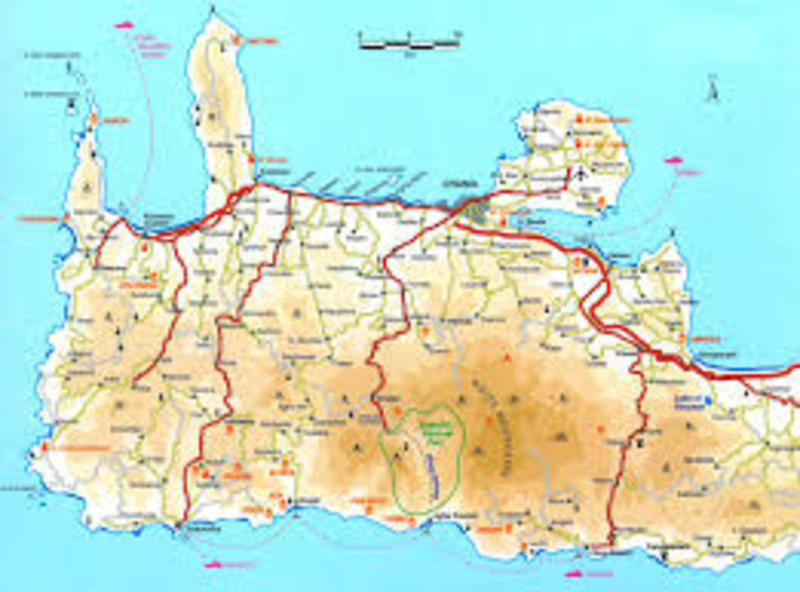Prefekturze Chania

A Brief History of Chania Prefecture
There are traces of human presence in Chania Prefecture since the Neolithic (6000-3500 / 2900 BC), mainly in caves, but also in the city of Chania and Nerokourou.
Throughout the Minoan centuries (2800-1100 AD), the most important regulation is the hill of Kastelli Chania. The houses were also recognized Dembla of Varypetro, Nea Roumata, Keramea, Pervolia, Akrotiri Sternes, Modi, Nerokourou, Nopegia, Falasarna, Caledonia, Ravdoucha, Kasteli Kissamos, pens and Samona Apokoronos. During the Minoan period (2000-1550 BC). The settlement of Chania developed into an agriculture, trade and maritime center. However, it reached its peak in the post-Minoan period (1550-1110 BC). Where there is a concept of urbanism with blocks and houses rich and well kept that once had two floors.
A brief history of Chania. In 1450 BC. BC, causing a fire, possibly because of the war, destroyed the settlement of Kasteli, parts of which, however, were still used as residences thereafter. During the 3rd post-Minoan and Mycenaean period (1440-1400 AD), the entire peak province and Chania evolved into a commercial center with equality in relations with the Peloponnese, Viotia, Cyprus, Phoenix, and Egypt. The presence of the Mycenaeans is depicted in architecture and ceramics.
During the 12th century, most of the settlements were abandoned, possibly due to decline due to the advent of the “sea people”. In the Early Iron Age (1st millennium BC), Dorian came, reigned, and built the existing inhabitants. the starting date and the geometric city-states have been set. during the 5th centuries, cities grew stronger. however, they flourished during the Hellenistic years (323-69 BC). states, despite the wars between them. the most important cities were Kydonia, Polichni, Pergamon and Keraea in the provinces of Kydonia Polyrrenaea, Inachorion, Falasarna and in Kissamos in the province of Kissamos, Aptera and Amphimala Hydramia do Apokorona, Elyros, Lissos, Syia and Kandanos Hyrtakina in Selino, Po Sekilis Araden and Taraden, .
In 69-67 BC. BC, the Romans seized Crete. Even so, Cretan cities continued to thrive well during the Pax Romana period. In AD 58, Titus, a disciple of Paul, became the first bishop of Crete. At the end of the 4th century AD, the island was Christianized and fell under the Roman state of the East, which evolved into Byzantium.
In 823 or 824 AD, Saracen seized Crete and destroyed many coastal towns of the prefecture. In 961 AD, Nikephorus II Phocas liberated the island. To bolster the population decline, Nikephorus II Phocas established his armed forces in the villages of Crete, as well as settlers from mainland Greece and Asia Minor. Clergy and missionaries, such as John Xenos, built churches and encouraged the Christian spirit in people. In 1082 and according to tradition, the Byzantine Empire established the 12 nobility (\ “Archontopoula \”) on the island which became the basis of the aristocracy, especially in the west of Crete.
In 1204, after the fall of Constantinople by the Crusaders, Crete fell under the Venetians, who until 1211 were in conflict with the Genoese over his property. However, full control of the Chania region took place in 1252, when the land was divided among the settlers of Venice; the city was rebuilt and became the seat of the rector (ruler) of the prefecture.
Venetians used Catholicism, abolishing Orthodox bishops, and punishing the local population, who often revolted mainly with the support of the Palaeologo family of Constantinople (1211, 1219, 1224, 1228-1233, 1272-1278, 1283-1289, 1332.1341, 1363-1364, 1365). However, with the overthrow of the Byzantine Empire in 1453, the rebels lost their support. The proliferation of the Turks in the Aegean Sea and the loss of Cyprus in 1570 to change the attitude of the Venetians towards the Greek people of Crete and brought them aside to a future conflict with the Turks. This is how the only major Kantanoleo revolution in the 15th and 17th centuries took place in 1527. The new status led to the intercommunion of Venetians with the inhabitants, the development of the urban classes, the improvement of the economy, and the flourishing of literature and art that is known as the Cretan Renaissance.
In 1645 the Turks in Gonia Kissamos and after a two-month siege Chania resumed. This is where the Turkish rule began with the Islamization of sections of the population, robbing the lowlands and restricting the freedom of the “ragias” people.
In 1770, Daskalogiannis revolted Sfakia at the encouragement of Russia. However, the rest of Crete did not revolt and the revolution was crushed with villages in the province destroyed.
In 1821 Crete was in a great revolution with important victories and forced the Turks to be strong. Hussein Bey, however, won a series of battles with the Cretans with the help of the Egyptian fleet and turned his actions in the Klephts War (1823-1824). With the headquarters of Grambous in 1825, a new period of rebellion began, but, although lasting until 1830, did not put Crete in the established Greek state. Crete then offered to Egypt in exchange for its aid to Turkey.
During the Egyptian rule (1830-1841), a heavy tax was imposed on those who suffered under the arbitrary Egyptians. When Crete was captured again by Turkey, a new revolution broke out in the so-called “Haerete” (1841), which was crushed by powerful forces. In 1850, the seat of the Turkish ruler moved from Heraklion to Chania.
In April 1858, five thousand armed Cretans gathered at Boutsounaria and demanded the abolition of the measures of oppression (Mavrogenis movement). The door was forced to meet most of their requests.
The second greatest revolution began in 1866 and lasted until 1869; Arcadio Monastery was blown up and became the climax of the revolution. This revolution forced the Turks to undertake administrative reforms (constitutional law). In 1878, a new revolt led to the Treaty of Halepa, which granted important privileges to the Cretans and appointed a Christian governor of the island. In 1889, due to the political divisions of the Christian population and the unilateral proclamation of the Union by some rebels, Turkey abolished many of these privileges. A period of terror and oppression of five years followed by what led the Cretans once again in 1895 to a revolt under the leadership of the commission during the political transition and the autonomy of the island. The defeat of the Turks at Vamo partially caused the Chania massacre (May 11, 1896),
Thanks to the new massacre and the burning of the Christian neighborhood in Chania on January 23 and 24 1897, the revolution of Crete was revived in order to reunify with Greece. The Greek government sent an expeditionary army of 1,500 men to Crete, which, after its first success, was banned by forces approaching Chania. The refusal of the rebels Akrotiri in accordance with the instructions of the European admirals was bombed by Naval Forces (9 February 1899). The defeat of Greece in the Greco-Turkish War in 1897, and the refusal of Europeans to accept the union, forced Eleftherios Venizelos and other revolutionary leaders to accept the dissolution of autonomy.
In December 1898, Prince George of Greece arrived in Chania, representing the major strengths and as governor of the Autonomous Cretan state. His dispute with Eleftherios Venizelos about the way of governing Crete and about the union, led to the Therissos revolution (1905), which led to the departure of the prince and his replacement by Alexander Zaimis. The election of Venizelos as Prime Minister of Greece in 1910 and the victorious Balkan Wars in 1912-1913 paved the way for the union of Crete with Greece, which was made an official of lifting the Greek flag at Firka from Chania, on 1 December 1913.



